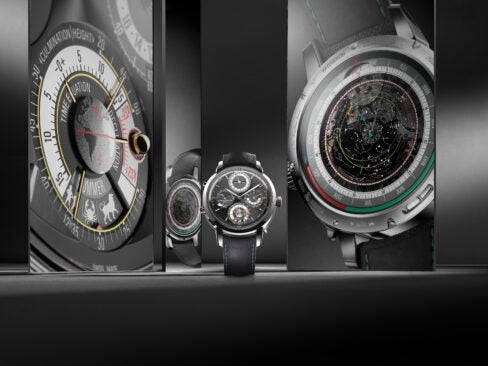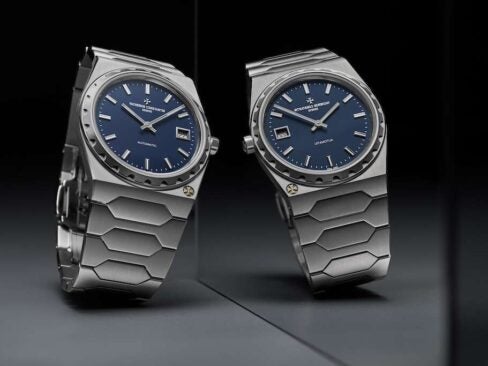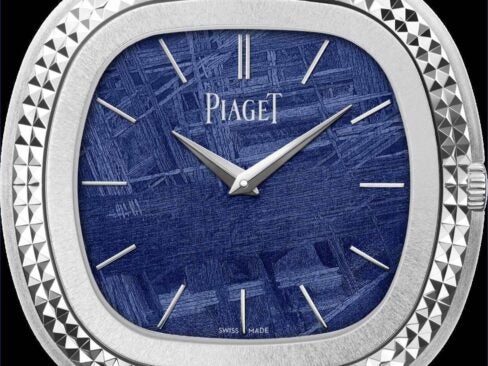Lovers of minimalistic art and fine timepieces will be in their element this year as we witness a renaissance in watchmaking: the art of skeletonization. In watches, where the movement is typically concealed within a case, skeletonizing the caliber is both an art and a science. Essentially, the concept consists of stripping away as much metal as possible from each component of the caliber, then showcasing that bare-bones movement via sapphire crystals and casebacks.
 Paring things back to the bone is by no means the simple option when it comes to creating a skeletonwatch. Roberta Naas explains the meticulous levels of craftsmanship required.
Paring things back to the bone is by no means the simple option when it comes to creating a skeletonwatch. Roberta Naas explains the meticulous levels of craftsmanship required.
Creating a skeletonized movement involves time and patience for the artistic portion, as the movement parts are almost always etched and engraved with elaborate motifs. Also, skeletonizing watches requires exceptional engineering when it comes to the technical elements.
The challenge is how to chisel away as much as 75 percent of the metal on each and every component – from wheels to gears, mainplates and bridges – while still maintaining its strength to properly perform its mechanical task. After all, the movement is a harmonious dance of mechanical parts that work together to track time and offer a myriad of other functions. This technical quest for bare-minimum looks leaves many watch brands turning to new materials, including sapphire disks, to help showcase the skeletonized watch.
 Once all the tiny components have been cut away to as little metal as possible, the pieces must be polished and finished. It can take an engraver hundreds of hours to carve away the metal and meticulously finish the pieces with stunning guilloché, Côtes de Genève swirls, or other motifs.
Once all the tiny components have been cut away to as little metal as possible, the pieces must be polished and finished. It can take an engraver hundreds of hours to carve away the metal and meticulously finish the pieces with stunning guilloché, Côtes de Genève swirls, or other motifs.
Some brands use the skeletonization process to create exceptional new designs. Roger Dubuis, for instance, reveals stars and spider-web-like motifs in its collection of skeleton watches unveiled this year. In fact, for the Excalibur Automatic Skeleton carbon watch, the micro-rotor of the in-house-made movement and the star-shaped bridge come together for a strong visual appeal. Each of the 167 movement components is hand-finished and requires 530 hours of work to complete. Of those hours, 170 are dedicated to achieving the demanding criteria of the Poinçon de Genève.
Focusing on skeletonized watches since its inception almost 50 years ago, Swiss independent watch brand Armin Strom has perfected a technique that, instead of reducing the amount of parts, displays the many individual components with superb finishes. Such is the case with the brand’s Tourbillon Skeleton timepieces, particularly the 18K rose gold Tourbillon Skeleton Fire. The mechanical architecture of the manual-wind movement, with double-going barrel that offers a 10-day power reserve, is enhanced via three-dimensional brown PVD coating. The brand’s artisans plate the bridges with rhodium in the workshop’s dedicated electroplating department. The 184 components are then individually hand finished.
Cartier also takes the art of skeletonization to new heights, especially in its recently released Crash Skeleton. Powered by a mechanical manual-wind movement, the 18K rose gold, unusually shaped Crash Skeleton houses 138 parts in the movement, each hand finished. Inspired by the original 1967 Crash watch, the new skeletonized watch features bridges that skillfully form the Roman numerals. This is a skeletonization system the brand developed for other watches, and has now implemented into the stunning see through Crash.
 The crystal clear, bare-to-the-bone nature of these watches, combined with their intricate finishes and incredible mechanical detail, make them a must-have for any watch lover. However, because of the complexity involved in building a skeleton watch, these artistic pieces are typically created in limited editions, so be prepared to go on a waiting list.
The crystal clear, bare-to-the-bone nature of these watches, combined with their intricate finishes and incredible mechanical detail, make them a must-have for any watch lover. However, because of the complexity involved in building a skeleton watch, these artistic pieces are typically created in limited editions, so be prepared to go on a waiting list.
Roberta Naas is an American journalist who has covered timepieces for more than 30 years. She is the founder of ATimelyPerspective.com, author of six books on the subject and contributing writer for many publications.










